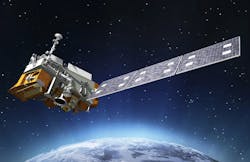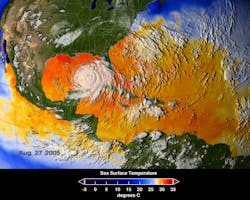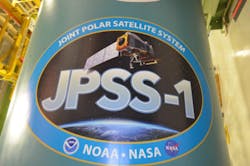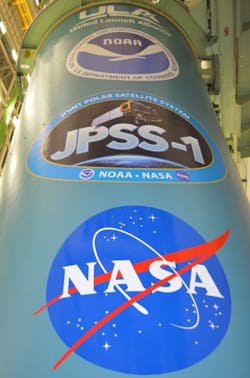The Joint Polar Satellite System (JPSS) is the Nation’s next generation of polar-orbiting environmental satellites. JPSS is a collaborative effort between NOAA and NASA, and represents significant technological and scientific advancements in severe weather prediction and environmental monitoring and will help advance weather, climate, environmental and oceanographic science.
JPSS satellites circle the Earth from pole-to-pole and cross the equator 14 times daily in the afternoon orbit—providing full global coverage twice a day and are considered the backbone of the global observing system. JPSS is the only viable national satellite program currently in production that ensures continuity of observational data at the quality levels needed to sustain current weather forecasts beyond 2017.
The JPSS program is truly a system, including a series of advanced spacecraft, five satellites with five highly-sensitive instruments and a versatile ground system that controls the spacecraft, ingests and processes the data, and provides information to users around the globe like NOAA's National Weather Service (NWS), including the National Hurricane Center.
Data and imagery obtained from satellites in the JPSS constellation will increase timeliness and accuracy of public warnings and forecasts of climate and weather events, thus reducing the potential loss of human life and property. As a result, information from JPSS supports every area of NOAA's mission, including supporting a more "Weather-Ready Nation," healthy coasts, resilient coastal communities, and adapting and mitigating climate change.
Polar-orbiting satellite data is the most important type of observations for accurately predicting weather three to seven days in the future. The primary user of JPSS data is NWS. Once the polar-orbiting data is retrieved from the JPSS satellites, the data is entered into NWP models that are utilized by NOAA's NWS to better predict medium- and long-term weather, including severe weather phenomena. This advanced notice greatly aided our Nation's leaders, decision makers, emergency managers and media to better provide increased warnings to the public-at-large. The global environmental data from satellites in the JPSS constellation are fed into Numerical Weather Prediction (NWP) models for forecasts and used for climate monitoring.
JPSS also extends a more than 30+ years of long-standing climate observation records, allowing study of long-term climate trends—which is increasingly important to the American public and scientific researchers alike in response to increased weather disasters and events. In fact, JPSS satellites improve and extend climate measurements for 30 different Environmental Data Records of the atmosphere, land, ocean, climate and space environment.
Data from the JPSS system is made freely available and in a timely manner to both domestic and international partners and users by the United States Government, in support of the U.S.' commitment to Global Earth Observing System of System GEOSS-with more than 88 participating countries and the European Commission.
With more than 40 years of working closely together, NOAA and NASA continue this successful partnership with the first next-generation polar-orbiting satellite launched on October 28, 2011: NOAA/NASA Suomi National Polar-orbiting Partnership. Building on the success of Suomi NPP, NOAA and NASA are on track for the launch of the second satellite in the JPSS program in early 2017, called JPSS-1. NOAA is responsible for managing and operating the JPSS program, while NASA is responsible for developing and building the JPSS spacecraft.
Related news & information:
You might also like:
Subscribe today to receive all the latest aerospace technology and engineering news, delivered directly to your e-mail inbox twice a week (Tuesdays and Thursdays). Sign upfor your free subscription to the Intelligent Inbox e-newsletter at http://www.intelligent-aerospace.com/subscribe.html.
Connect with Intelligent Aerospace on social media: Twitter (@IntelligentAero), LinkedIn,Google+, and Instagram.





